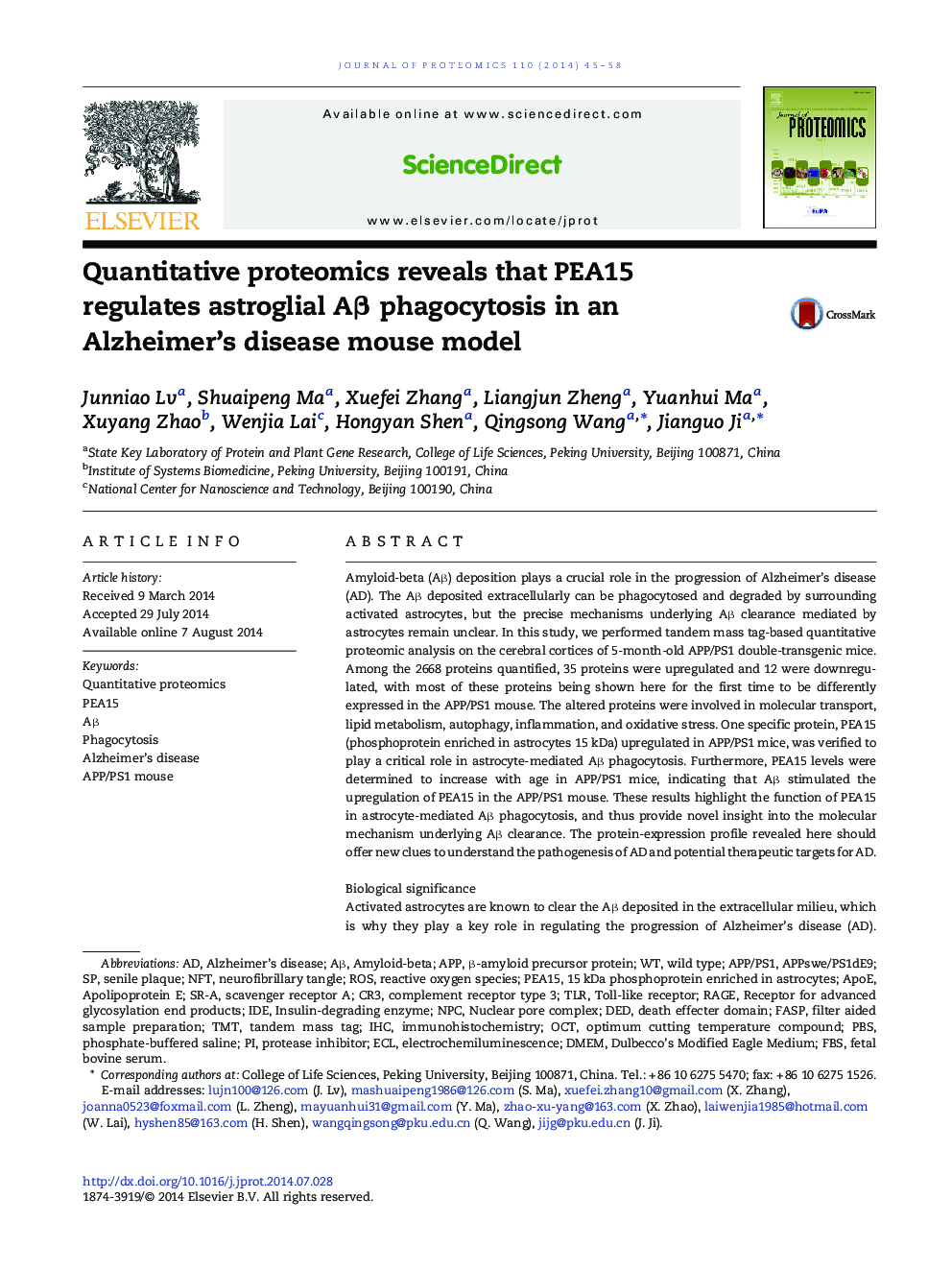| Article ID | Journal | Published Year | Pages | File Type |
|---|---|---|---|---|
| 1225720 | Journal of Proteomics | 2014 | 14 Pages |
•A novel profile of altered proteins in the cerebral cortices of APP/PS1 mice•PEA15 is verified to modulate the process of astroglial Aβ phagocytosis•The temporal alteration of PEA15 in APP/PS1 mouse contributes to the progression of AD
Amyloid-beta (Aβ) deposition plays a crucial role in the progression of Alzheimer's disease (AD). The Aβ deposited extracellularly can be phagocytosed and degraded by surrounding activated astrocytes, but the precise mechanisms underlying Aβ clearance mediated by astrocytes remain unclear. In this study, we performed tandem mass tag-based quantitative proteomic analysis on the cerebral cortices of 5-month-old APP/PS1 double-transgenic mice. Among the 2668 proteins quantified, 35 proteins were upregulated and 12 were downregulated, with most of these proteins being shown here for the first time to be differently expressed in the APP/PS1 mouse. The altered proteins were involved in molecular transport, lipid metabolism, autophagy, inflammation, and oxidative stress. One specific protein, PEA15 (phosphoprotein enriched in astrocytes 15 kDa) upregulated in APP/PS1 mice, was verified to play a critical role in astrocyte-mediated Aβ phagocytosis. Furthermore, PEA15 levels were determined to increase with age in APP/PS1 mice, indicating that Aβ stimulated the upregulation of PEA15 in the APP/PS1 mouse. These results highlight the function of PEA15 in astrocyte-mediated Aβ phagocytosis, and thus provide novel insight into the molecular mechanism underlying Aβ clearance. The protein-expression profile revealed here should offer new clues to understand the pathogenesis of AD and potential therapeutic targets for AD.Biological significanceActivated astrocytes are known to clear the Aβ deposited in the extracellular milieu, which is why they play a key role in regulating the progression of Alzheimer's disease (AD). However, the molecular mechanism underlying astrocyte-mediated Aβ phagocytosis and degradation remains unclear. By performing tandem mass tag-based quantitative proteomic analysis, we identified 47 proteins that were differentially expressed in APP/PS1 double-transgenic. To our knowledge, this is the first time most of these proteins have been reported to exhibit altered expression in the mouse model of AD. Furthermore, our results indicate that one of the proteins upregulated in the APP/PS1 mouse, PEA15 (phosphoprotein enriched in astrocytes 15 kDa), regulates astroglial phagocytosis of Aβ. Our findings provide new insights into the molecular mechanism underlying Aβ clearance in AD. The altered profile of protein expression in APP/PS1 mice described here should offer valuable clues to understand the pathogenesis of AD and facilitate the identification of potential targets for the treatment of AD.
Graphical abstractFigure optionsDownload full-size imageDownload high-quality image (129 K)Download as PowerPoint slide
